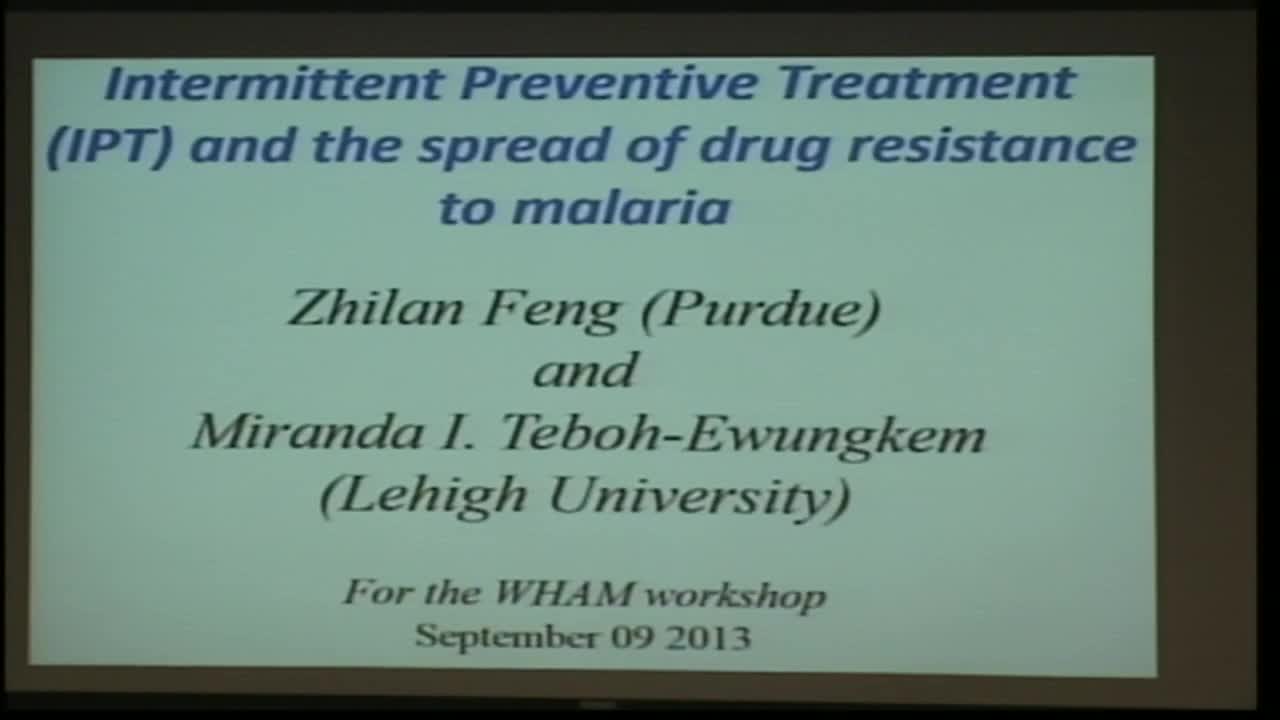Intermittent Preventive Treatment (IPT) and the Spread of Drug Resistance to Malaria
Presenters
September 9, 2013
Abstract
1. Motivation of the Problem
Intermittent preventive treatment (IPT) describes the process in which a full therapeutic course of anti-malarial drug is administered to individuals most vulnerable to malaria effects, regardless of their infection state. IPT usage is increasingly being utilized as a means of preventing malaria in these at risk humans in malaria endemic regions. The vulnerable populations are usually defined by age in which case if IPT is administered to infants it is referred to as (IPTi), to children (IPTc) and to pregnant women (IPTp). In fact, IPTp is currently the recommended preventative approach for malaria in pregnant women, and is being explored as a way to prevent malaria in infants and children.
Mathematical models for malaria that include IPT can be used to predict rapid spread for the malaria parasite with IPT use. Our goal is to investigate the relationship between IPT and the spread of drug resistance.
2. Objectives
Develop an age structured model to investigate the relationship between IPT and spread of drug resistance to malaria.
Determine the critical level of IPT treatment that would minimize the spread of drug resistance and reduce disease prevalence and burden.
Determine the optimal timing for IPT drug administration.
Identify the targeted age groups for optimal treatment strategies.
Tools from dynamical systems theory will be used to analyze the properties of the model, and the results can help address the biological questions proposed in this project. Numerical simulations of the model will also be conducted to confirm or extend the analytical results. One of the objectives will be for the group to continue to work on the project after the workshop and to develop it into a manuscript for publication.
3. Suggested Readings (will continually be updated)
O'Meara W.P., Smith D.L. and McKenzie F.E. (2006). Potential impact of intermittent preventive treatment (IPT) on spread of drug resistant malaria. PLoS Medicine 3(5): 0633-0642.
Carneiro I. Smith L. Ross A. et. al. (2010). Intermittent preventive treatment for malaria in infants: a decision-support tool for sub-Saharan Africa. Bull World Health Organ 88:807-814.
Koella J.C. and Antia R. (2003). Epidemiological models for the spread of anti-malarial resistance. Malar J. 2:3.
Bloland P. (2001). Drug resistance in malaria [WHO/CDS/CSR/DRS/2001.4], Geneva: World Health Organization, 2001.
Hastings I.M. (1997). A model for the origins and spread of drug-resistant malaria. Parasitology 115:133-141.
Hastings I.M., Watkins W.M. and White N.J. (2002) The evolution of drug-resistant malaria: The role of drug elimination half-life. Philos Trans R Soc Lond B Biol Sci 357: 505-519.
Hastings I.M. and Watkins W.M. (2005). Intensity of malaria transmission and the evolution of drug resistance. Acta Trop 94: 218-229.
